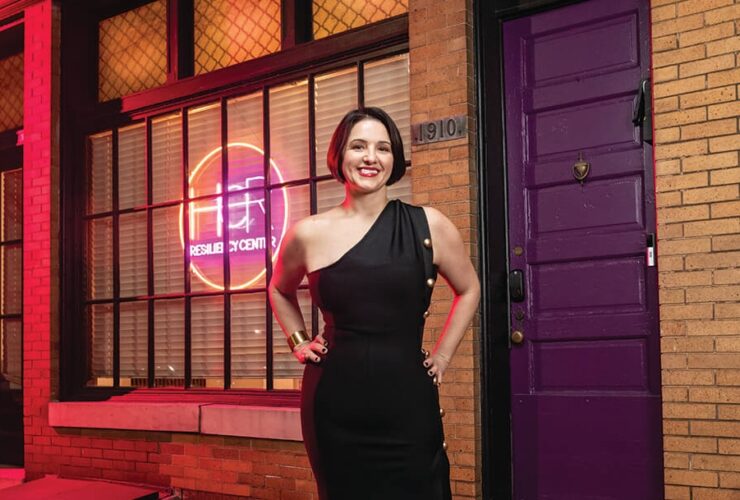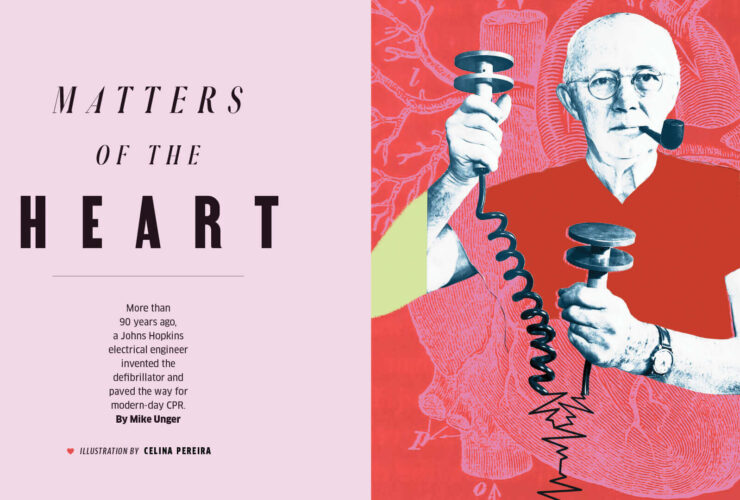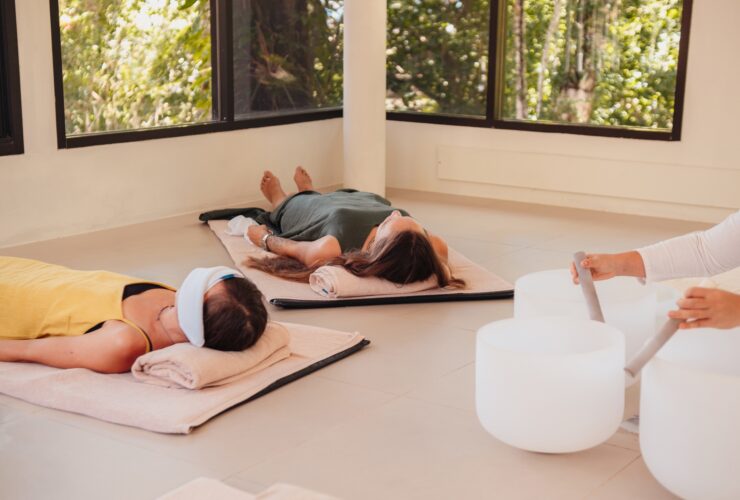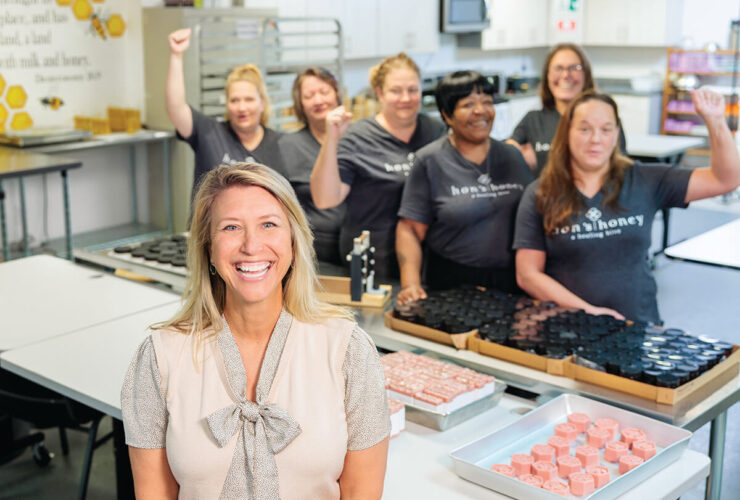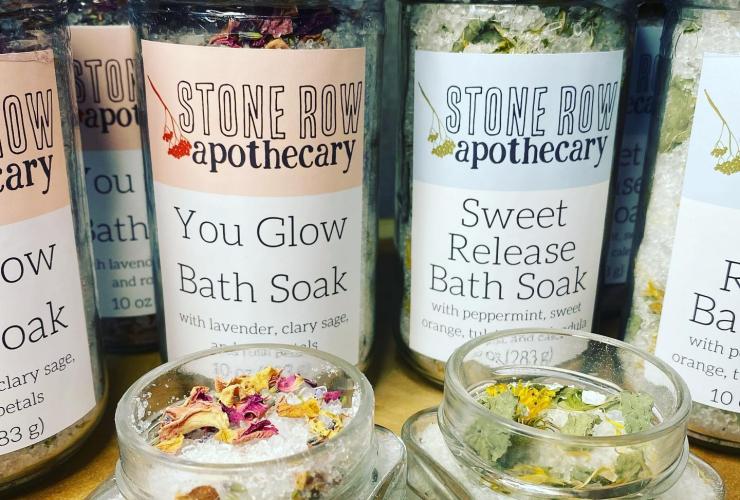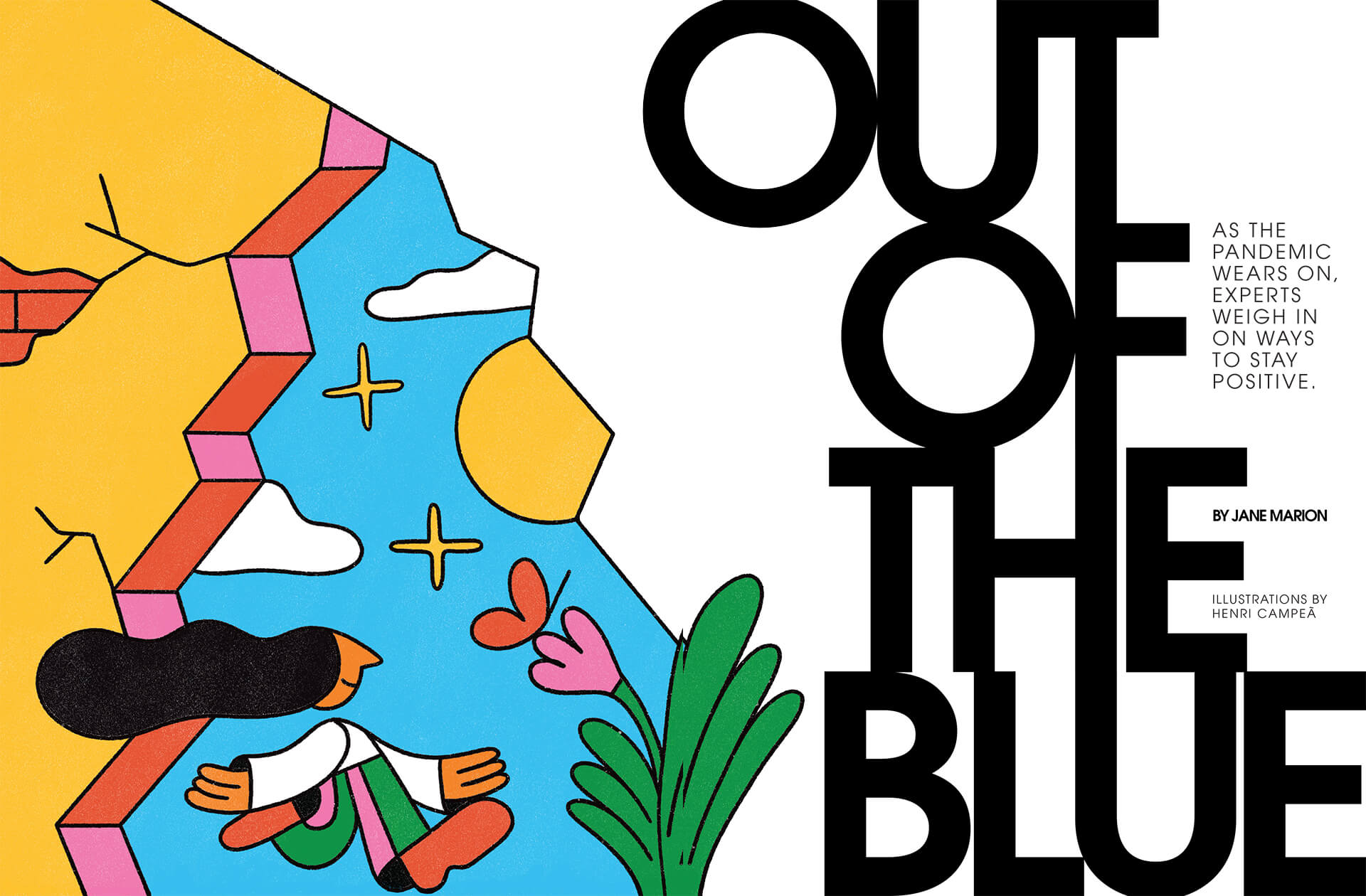
Food & Drink
Out of the Blue
As the pandemic wears on, experts weigh in on ways to stay positive.
Illustrations by Henri Campeã

WHILE MARY ALICE FALLON-YESKEY, a publicist at Johns Hopkins Press whom you may know from her stint on Ace of Cakes, is a famously sunny-side-of-life person, there’ve been times when the state of the world has gotten to even her. And when the clouds come, she gives herself permission to mope.
“I can have a night where I can be just be sad and drink wine and listen to mopey ’90s music,” says the 44-year-old mother of two young boys. “And that’s how I deal with it—just knowing that sometimes that’s a place I need to go.”
Between a killer virus, political chaos, racial strife, and encroaching environmental catastrophe, it is far from hyperbole to say that 2020 was a rough year for our collective psyche—for even the cheeriest among us. And as we’ve moved through spring, summer, and fall in a pandemic, now is the winter of our discontent.
In fact, according to a recent study, people in the United States are the most unhappy they’ve been in nearly 50 years. This sobering—yet unsurprising—conclusion comes from the COVID Response Tracking Study conducted by the research organization NORC at the University of Chicago this past May.
Among the findings: 14 percent of American adults say they’re very happy, down from 31 percent who said the same in 2018. That year, 23 percent said they’d often felt isolated in recent weeks. Now, 50 percent say that. (And the survey was taken just before the death of George Floyd, which led to nationwide protests, compounding the stress and loneliness caused by the pandemic.)
Of course, the pandemic has also been a mental health trigger to already vulnerable populations, including those who struggle with serious clinical depression and related mood disorders. As of late June, a report from the Centers for Disease Control and Prevention’s Morbidity and Mortality Weekly Report revealed that symptoms of anxiety disorder and depressive disorder increased considerably in the United States during April through June 2020, compared with the same time span in 2019.
In the survey, 40.9 percent of respondents reported at least one adverse mental or behavioral health condition, including symptoms of anxiety disorder or depressive disorder related to the COVID-19 pandemic. In the same report, one in four young adults ages 18 to 24 had seriously considered suicide in the past 30 days when the study was taken. And certain groups—including unpaid caregivers, racial minorities, and essential workers, who also reported elevated rates of suicidal ideation—were disproportionately affected by pandemic-related stresses.
On a local level, calls to Baltimore’s Health Hotline have doubled since the pandemic, and calls and texts to 211 seeking mental-health resources are up nearly 50 percent since its start, while therapists and psychiatrists have long waiting lists and are working overtime to handle heavy caseloads. All of this adds up to one inevitable fact: We are experiencing a parallel pandemic of sorts, group PTSD from the fallout of living through one of the worst health crises of the past century.
“People are overwhelmed—it’s enough already,” says Karen Swartz, Director of Clinical and Educational Programs at the Johns Hopkins Mood Disorders Center. “COVID depression is trailing the infectious epidemic. And the expectation is that there will be a concerning, worrisome explosion of psychological consequences from the pandemic. As the pandemic continues, with no end in sight, we are in a period of disillusionment, where people have a flagging of their emotional reserves, and they are bottoming out.”
Local therapists are witnessing the impact, too. “This is an event that has affected people’s mental health more than anything I’ve ever seen—there’s nothing that’s even close,” says Towson-based therapist Michael Bombardier, who has been in practice for 22 years. “We are in this uncertainty state that’s protracted, and that’s terrible for mental health.”
“This is an event that has affected people’s mental health more than anything I’ve ever seen—there’s nothing that’s even close,” says therapist Michael Bombardier. “We are in this uncertainty state that’s protracted, and that’s terrible for mental health.”
To be clear, clinical depression can be a serious condition that requires medical attention. But for those of us whose struggles are more situational, how can we learn to push through and put on a happy face? In order to know happiness, we need to know what it is.
“When we’re talking about happiness, we are talking about two different things,” says Bombardier, citing the work of Nobel Prize-winning psychologist Daniel Kahneman. “One is an emotional experience—happiness is like a fleeting momentary experience of pleasure or connection or joy. And because we are social animals, those things tend to happen in the presence of other people.”
The other concept, says Bombardier, is related to a feeling of satisfaction: “That’s the longer-term story we tell ourselves about our lives, which is an entirely different process than the momentary emotional experience,” he says.
For many of us, the pandemic has stalled the narrative type of happiness, he says. “A lot of the stories we tell are achievement-based,” points out Bombardier, “and a lot of that right now is on hold for so many people.”
Also obscuring our happiness is the fact that, as the world around us has largely come to a halt, people tend to ponder. “When we sit around and think about things,” says Bombardier, “we ruminate and obsess about negative and unfinished things much more than pleasant experiences—and that’s a hard-wiring issue that most people think is evolutionary and helped us survive. How to just be happy is almost a new problem for humans. How do we sit back and really enjoy the ride now?”
In many ways, the pandemic has presented a unique chance to rethink, reset, and reevaluate what matters in our lives.
“If your basic needs are met, and your life hasn’t been disrupted to the core in terms of finances and health,” says Neda Gould, associate director of the Anxiety Disorders Clinic at Johns Hopkins Bayview Medical Center, “this is an opportunity to reevaluate what matters in life, to practice gratitude for all the things we continue to have, and an opportunity to reframe and look within and develop new perspectives.” And also, acquire healthy habits.
“Do something as simple as take walks, instead of feeling stuck inside all day,” says Justin Halberda, a professor at both the Department of Psychological and Brain Sciences and the Department of Cognitive Science at The Johns Hopkins University, who delivers an annual “happiness” lecture to incoming Hopkins freshman. “You don’t have to take a big walk, you can take four small walks throughout the day, but that exercise has a cascading effect on your mood—and it can become habitual.”
Halberda also suggests learning a new skill such as baking or taking on a project that you’ve been putting off for years, like filing old print photographs in an album. “Humans find project-oriented work very rewarding, and part of it is because you can get into what is called a flow state,” he explains. “Activities that require some attention and engagement can give rise to a flow state.”
Fallon-Yeskey recently resumed her love of writing postcards. “I have now completely resuscitated my passion for sending letters in the mail, which I did as a teenager,” she says. “It’s just a small way to sprinkle delight around the world, and it doesn’t take much time. I’ve made it a priority now, and it’s absolutely a habit I don’t think I’ll ever stop doing.” And while letter writing is one way of forming social connection, there are others, as well.
“People can get their social needs met by arranging phone calls with friends,” says James Maddux, a Senior Scholar for the Advancement of Well-Being at George Mason University in Fairfax, VA. “I don’t mean just picking up the phone and calling someone, I mean sending an email or text and arranging a time on Zoom or Skype or by phone.” (It’s worth noting that so-called “Zoom fatigue” can be its own issue.)
That said, Maddux points out that, depending on your social situation, it’s equally important to disconnect if there are a lot of people in a particular household. “Sit down with a partner or family members and assess each person’s needs for some time alone,” says Maddux. “And try to schedule that in, where, for example, each spouse or parent gets a half hour a day of quiet time while the other parent takes over.”
Swartz echoes the idea of unplugging. “If there’s one thing we all need to do right now, it’s protect our sleep,” she says. “Exhaustion is going to make everything more overwhelming. A major issue for many who are working at home is that it’s hard to know that there’s an ‘on’ and an ‘off ’ switch.”
Swartz recommends using different areas of your home for different tasks. “Have one place where you do your work and then go somewhere else when you’re done with your day,” she suggests. “Having structure, giving yourself permission to stop working and transitioning to time with family is really important, especially when you’re working from home and it’s really hard to turn off.”
“If there’s one thing we all need to do right now, it’s protect our sleep,” says Karen Swartz, Director of Clinical and Educational Programs at the Johns Hopkins Mood Disorders Center. “Exhaustion is going to make everything more overwhelming.”
Bel Air-based life coach Barbara Harman recommends volunteering your time with acts of kindness, large or small. “Anytime you help someone else—a child, your partner, a spouse—you are helping yourself,” she points out.
Among the dos, there are some definite don’ts. “It’s important to know what’s good enough,” says Harman. “For people who have to teach their kids at home and not go out to work, for instance, the things that you are doing during this time don’t have to be perfect. So many of us put pressure on ourselves to get it perfectly done or to have everything run smoothly. If you don’t adjust your expectations, all those things will bring your happiness level way down.”
Of course, the pursuit of perfection is only exacerbated by social media, so it’s also best to limit the time spent in front of a screen. “The positive aspect of being on social media is that we can connect with others,” says Gould. But everyone seems happy on social media, Gould reminds, and that’s just a snapshot of their lives—the one they’re choosing to share with the public. It rarely tells the whole story.
Above all, experts say that staying in the moment—whether you keep a gratitude journal or meditate—can be key. Yeskey says this has worked well for her.
“I had a Zoom meeting with an editor at work today, and I said, ‘How are you?’ And he laughed and said, ‘I don’t know why people even say that.’ And I said, ‘How are you today?’ And he said, ‘Today, I am great.’ In a nutshell, the only way to get through this is to compartmentalize it and parse it down—otherwise, it’s overwhelming.”
Harman says that if we pay attention, we will soon see that happiness is all around. “People experience happy things on a daily basis, but they let them go by without recognition,” she says. “It just takes practice to recognize the good things.”
“There’s science behind mindfulness meditation that it really does reduce our stress and encourages positive thinking and engages the parts of our brain that are engaged in happiness,” says Gould, who teaches a free mindfulness meditation class to the public on weekdays via jhjhm.zoom. “It’s helpful to learn to tell yourself, ‘This is the only moment I have to think about right now.’”
And that includes not fixating on the idea that a COVID vaccine is a cure-all to whatever ails us.
“It’s fine to say my life will hopefully go back to whatever normal was,” says Maddux, who points out that science bears out the theory that people have a set point that they return to, whether the event is positive or negative. “Lottery winners get a temporary spike in happiness, and then they go down to where they were before they won. Likewise, there’s a good chance that if there’s a vaccine that we discover that works on 90 percent of the people, the country will experience a brief spike in national happiness—but then we will all go back to complaining about the things that we did before the pandemic started.”
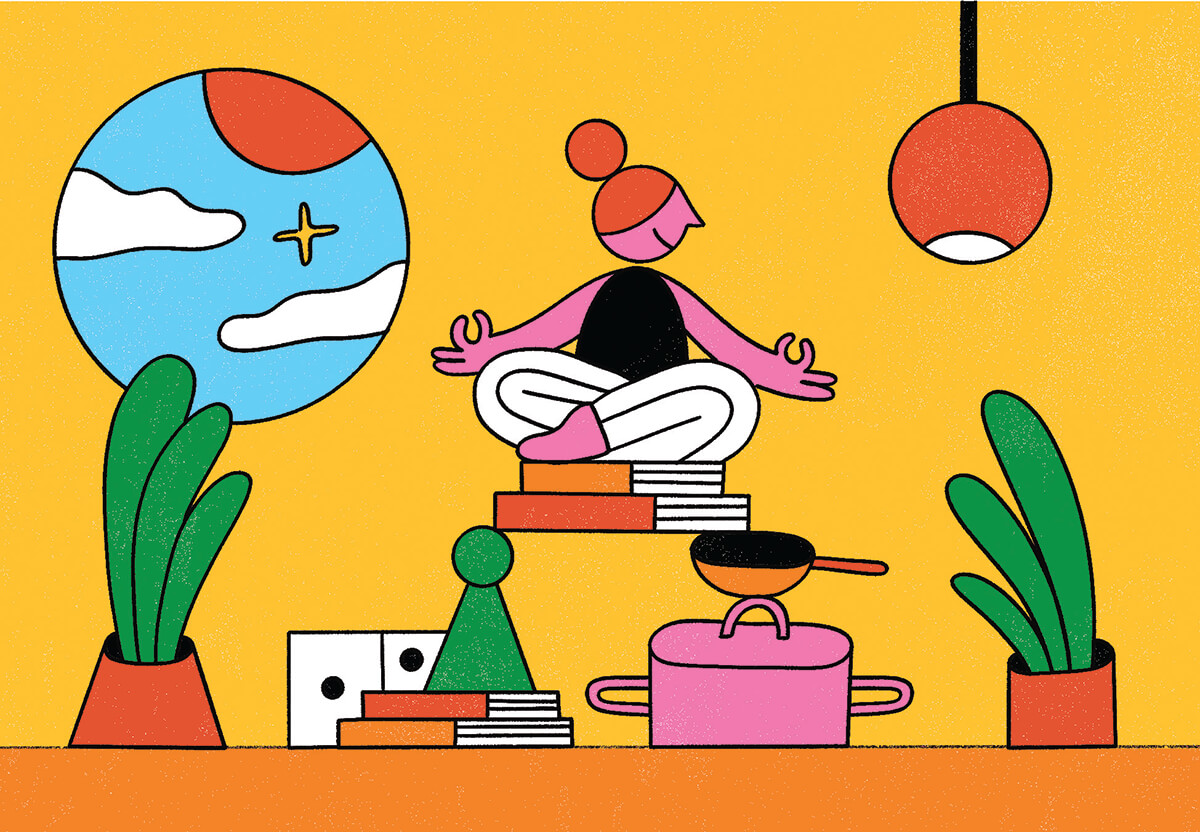
HOME SWEET HOME
By Jane Marion
In January of 2019—in other words, a lifetime ago—my husband and I made plans to travel to Bhutan and Nepal, where our daughter, Sophia, would be teaching for the year. I didn’t know much about Nepal’s neighbor to the east, the lush Himalayan kingdom isolated from the wider world for much of the 20th century. But I did know that Bhutan’s nickname was “The Happiest Place on Earth” and the birthplace of the Gross National Happiness index. It cost $250 a day to pay for the privilege of being a tourist in Bhutan, but I wanted in.
Then COVID hit, Sophia was evacuated, and our plans were canceled. Instead of traveling to this Shangri La, with its ancient cliffside monasteries and honey-colored hills, our Pikesville home, gun-metal gray with ambient traffic noise from I-83, was now a place for some kind of warped staycation.
To say that I was deflated doesn’t begin to describe it. Travel has always made me happy. Even the anticipation of it gets the endorphins flowing. I am ever grateful for having made alms with monks in Chang Mai, Thailand, communed with Galapagos turtles on the island of Santa Cruz, and explored the ancient ruins of Machu Picchu. But the flip side to my nomadic nature is that I equally enjoy the promise of coming back home with a new worldview, but one that affirms that I love the life I live here at home.
“I WAS SURE THAT BREATHING THE HIMALAYAN AIR WOULD MAKE ME A CONTENDER FOR THE HAPPIEST PERSON ON EARTH.”
A year ago, this house arrest would have been unfathomable. I’ve spent hours cooking in my kitchen, played board games, read books that had long been abandoned on the shelves. I’ve unfurled my yoga mat and stood on my head in the middle of my living room. I’ve invited neighbors to drink glasses of wine (at a distance, of course) under our newly installed string lights. And inside the bubble of what’s starting to feel like the world’s longest snow day, I’ve found pleasure in the ordinary.
I was sure that I’d come back from Bhutan a newly minted me—a person for whom happiness was a constant, easily achievable state of being and beneficence, as if the simple act of breathing the Himalayan air among Buddhist denizens would make me a contender for The Happiest Person on Earth.
Instead, the life lesson has been an unexpected one: Happiness doesn’t come from traveling to faraway lands. It’s a state that grows out of stillness—that I’ve been in the right place all along. And no one—not even a monk standing on some sacred hillside—could have brought me to this place. This epiphany fortifies me, and I’ll take it with me wherever I wander next.
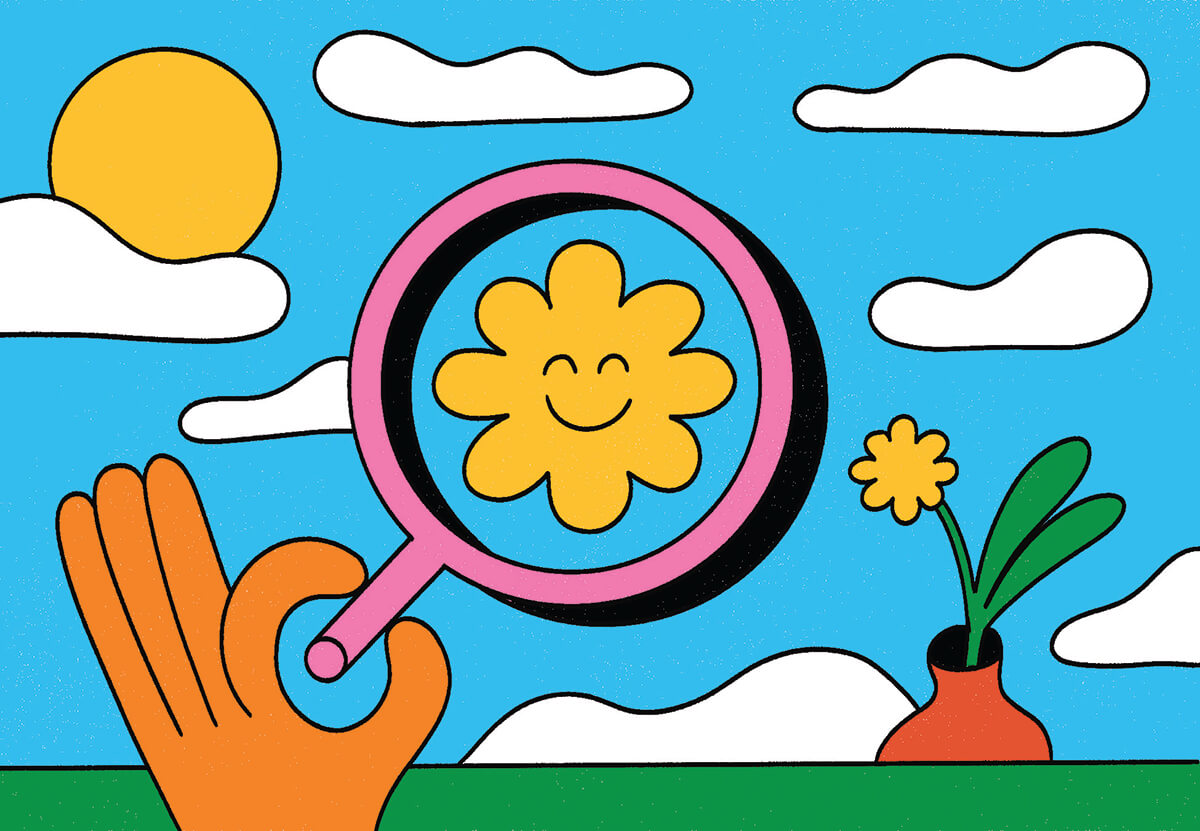
IT’S THE SMALL THINGS
By Eddie Matz
“I have great news, Eddie—you have cancer.” It was 2005, and the words of my oncologist hung in the air like an August storm cloud. Although I was relieved to have a diagnosis after months of testing, I failed to grasp what was so awesome about the big C (aside from getting my wife’s blessing to shave my head again).
As Dr. Dan excitedly went on to tell me in his thick Romanian accent, the great news was that he was going to cure me. But as I soon learned, the real gift of my disease was the perspective that came along with it.
To be clear, I never thought cancer would kill me. After all, with a 75-90 percent survival rate, my Hodgkin’s lymphoma was one of the “good ones.” Still, a couple weeks into my six-month chemotherapy treatment, I was overcome by a newfound sense of clarity. I suddenly felt like I had permission to say the things I wanted to say and do the things I wanted to do. Not in a rude or selfish way. Not in a skydiving, Rocky-Mountain-climbing kind of way. Just in a very grounded, in- the-moment kind of way.
Instead of taking things for granted, I spent those six months appreciating life’s little moments. I played catch with my little boy. I took long showers with my wife. I sat down while peeing (sure, it takes a little longer, but there’s nothing in my life I’d rather do standing than sitting). In between those blissful flashes, I told anyone that would listen how I’d found the key to happiness and that I would never sweat the small stuff again. Turns out I was wrong.
“THE UPSIDE OF THE CORONAVIRUS IS THAT IT REMINDED ME OF THE IMPORTANCE OF APPRECIATING ALL THE LITTLE THINGS.”
At some point after “you’re cancer-free,” life gets in the way. In the process of raising three kids and paying the mortgage and changing jobs, all the perspective I’d gained flew right out the window. But this past March, when quarantine started, it flew right back in.
Do I wish the pandemic never happened? Yes. Would I do anything to spare my wife from the grief of losing her mother to COVID? Absolutely. But the upside of the coronavirus (there’s always an upside, if you look hard enough) is that it reminded me—and all of us, hopefully—of the importance of appreciating the little things. Like school. And sports. And hugs. Here’s hoping that when things get back to normal and we’re COVID-free, life doesn’t get in the way.
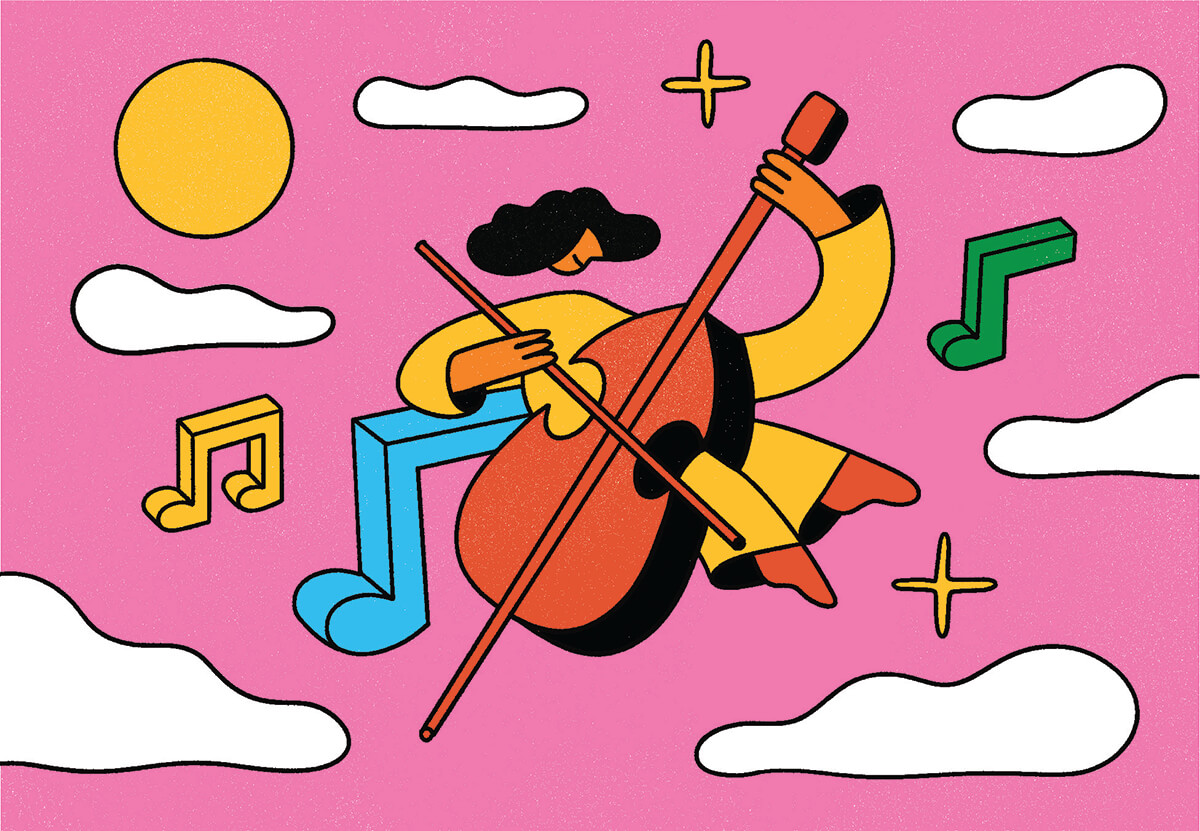
CELLO? IS IT ME YOU’RE LOOKING FOR?
By Max Weiss
I am, to put it mildly, a very verbal person. Words are my life, my stock in trade. I love to debate, to pontificate, to hold court. I love to discuss, to analyze, to break stuff down. In fact, I love words so much,
I’m literally a professional talker. (I worked in talk radio for many years.) But it’s not just talking, of course. I love to read and to write—I do both of those things for a living. And when I’m not reading, writing, or talking? I’m relaxing—by playing word games like the New York Times’ Spelling Bee.
Suffice it to say, my brain never shuts the hell up.
Except for when I play the cello. Cello playing, by its very nature, is a nonverbal pursuit. When you play music, you’re tapping into a different part of your brain, one that operates on emotion and instinct and physicality. Not to suggest that cello playing doesn’t engage the brain—of course it does. But it does so wordlessly.
In that sense, music is a form of meditation for me: It forces me to still my mind and look within. Music is also a social pursuit—or at least it can be. I love playing chamber music, which is truly a conversation without words. It takes a while to get into the rhythms of chamber music—but once you reach that simpatico with the other players, it’s magical. Watch chamber musicians when they play: The best ones are making eye contact, moving together, anticipating together, breathing together.
While chamber music is my favorite way to make music, I recently rediscovered my love of playing in an orchestra by joining the Hopkins Symphony Orchestra. Now, orchestras are a very different creature from chamber groups. First of all, there are a lot more people. Second of all, there is one boss—the conductor— and the goal of the ensemble is to follow his or her musical vision. Yes, there’s communication among the players, but it’s mostly in the service of one person’s interpretation of the music.
And yet, when an orchestra performs a great symphonic work, there is nothing like it. That collective, wordless language gives you a sense of connection—to other musicians, to generations before you, to the audience, to yourself.
Of course, the punchline to all of this is that the HSO season got canceled this year due to COVID-19. I also haven’t been able to play any chamber music. (Chamber music over Zoom is a non-starter—there’s a delay.)
Playing cello is still a balm for me—I still practice regularly and record silly videos on my Instagram page as I wait for this damn pandemic to be over. This is a stressful time for all of us. I’m so lucky to have a thing that gives me focus and joy and quiets my overactive brain.
More Health Tips
LOOK ON THE BRIGHT SIDE 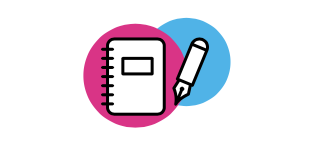
The power of positive thinking is more than just a phrase. In fact, it has been studied. In one 2001 research project, scientists from the University of Kentucky examined the content of the journals of 180 Catholic nuns from the 1930s and 1940s through their entire adult lives. A key finding? A positive outlook can help predict health outcomes.
“The nuns who chose to focus on positive things in their journals lived about a decade longer,” says Justin Halberda, a professor in the Department of Psychological and Brain Sciences at The Johns Hopkins University.
The takeaway from this study and others like it? It’s been scientifically proven that keeping a gratitude journal can lead not only to a happier life, but a longer one.
“A gratitude journal is something people can do as they are going to bed,” says Halberda. “It can be two minutes of asking yourself, ‘What am I thankful for today?’ Then you jot it down. The way we use our will and our planning to structure our lives can have a massive effect on longevity and the happiness we experience in life.”
MEDITATION 101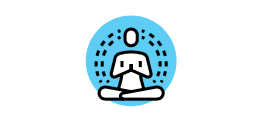
While meditation has been around for thousands of years—with the oldest documented evidence of it depicted in Indian wall art from approximately 5,000 to 3,500 BCE—it has experienced a relatively recent boom in the West. Meditation has ties to many world religions, including Buddhism, Hinduism, Sufism, and Judaism. The practice first came to Europe in the 1700s, when some Eastern philosophy texts were translated into various European languages. By the 20th century, meditation developed a following in the United States, removing it from its religious roots and, over time, making it more mainstream.
Now, with most of us isolated from the world we once knew due to COVID-19, there has never been a better time to take up this ancient art form that has been scientifically proven to help with depression, as well as other ailments. In fact, the word meditation, introduced in the 12th century, is derived from the Latin word meditatum, meaning “to ponder.”
“There’s so much uncertainty about the future,” says Neda Gould, associate director of the Anxiety Disorders Clinic at Johns Hopkins Bayview Medical Center, “and, during times of distress, our brains latch on to catastrophic outcomes, so there is relief in coming back to the present when you’re feeling overwhelmed.”
There are many types of meditation, but the one that works well for beginners is known as mindfulness meditation. “Mindfulness meditation does not seek to cultivate any specific mental or emotional state,” explains Michael Bombardier, a Towson-based therapist. “Instead, mindfulness is an ‘open monitoring’ approach that trains you to apply non-judgmental awareness to whatever is happening in the present moment, be it pleasant, unpleasant, or neutral.”
Mindfulness meditation, he says, is all about acceptance of what is. “The technique is primarily a process of subtraction,” he says. “You let go of thoughts, you release your desire to fix or change things, and become a silent witness to all that arises.” Adds Gould, “People are surprised by how simple of a technique it is. It’s not this religious, intangible experience—it’s just the opposite. It’s about grounding. People are pleasantly surprised that it’s simpler than what they thought.”
“People can set aside a few minutes of the day to practice meditation and mindfulness,” adds Bombardier, who suggests using an app such as Calm or Headspace to get started. “The idea is not just that the 10 minutes you spend meditating are pleasurable, but that it helps you tune in to other pleasures, as well.”

